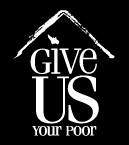So here’s the headliner: the recession contributed to an increase in overall homelessness from 2008 to 2009, and family households experienced the largest percentage increase. The increases, coupled with worsening economic and demographic indicators of homelessness, paint an austere picture of The State of Homelessness in America (National Alliance to End Homelessness, 2011).
Other Major Findings:
The nation’s homeless population increased by approximately 3 percent from 2008 to 2009. The largest percentage increase among subpopulations was in the number of family households experiencing homelessness, which increased by over 4 percent. In Mississippi, the number of people in homeless families increased by 260 percent.
The doubled up population increased by 12 percent to more than 6 million people from 2008 to 2009. In Rhode Island the number increased by 90 percent; in South Dakota the number more than doubled.
Nearly three-quarters of all U.S. households with incomes below the federal poverty line spent over 50 percent of monthly household income on rent. Forty states saw an increase in the number of poor households experiencing severe housing cost burden from 2008 to 2009.
California, Florida, and Nevada – states known to have been disproportionately impacted by the recent housing crisis – have high rates of homelessness and high rates of unemployment, foreclosure, housing cost burden, lack of insurance, and doubling up.
People in doubled up living situations, released from incarceration, and aged out of foster care are twice as likely to experience homelessness than the average poor person; these populations are twenty times as likely to experience homelessness as the average American.
So the verdict is: the state of homelessness isn’t great.
In fact, Nan Roman (President, NAEH) points out, “These findings project what depressed wages, stagnant unemployment, unrelenting housing cost burden, and the lagging pace of economic recovery really means: increases in homelessness and heightened risk of homelessness for more and more Americans.”
Which is why it’s time for us to renew our commitment to ending homelessness.
As the new Congress and the Administration work to revitalize the American economy, it’s our job to make it clear that must include homelessness interventions in the recovery strategy – clearly, as these data show, curbing and ending homelessness is a critical part of economic recovery.
Want more? Check out the report online.
Catherine An is the Media Relations and Communications Specialist at the Alliance. This blog first appeared on the National Alliance to End Homelessness Blog, About Homelessness.
Subscribe to:
Post Comments (Atom)



1 comment:
This might be of interest to you: http://playspent.org
McKinney’s SPENT is an immersive online experience that challenges gamers and non-gamers alike to survive poverty and see first-hand that homelessness is just a shortfall away
Post a Comment